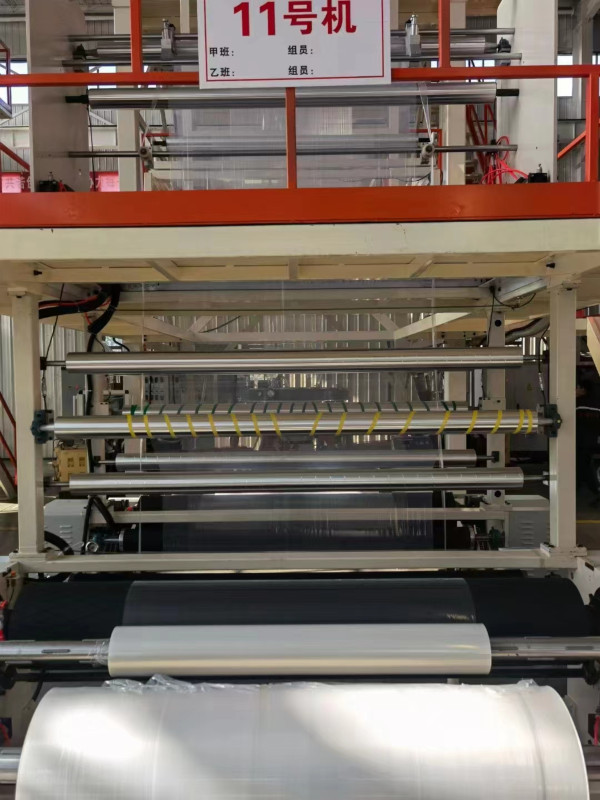Polyethylene (PE) film is a thin, flexible material made from polyethylene polymer that is widely used for packaging, protection, and other applications. The manufacture process of polyethylene film can be broadly divided into several stages:
- Resin production: The first step in the manufacture process is to produce the raw material, which is a type of polyethylene resin. This is done through polymerization, a chemical process that creates long chains of polymer molecules from monomers such as ethylene. The resin is then pelletized, dried, and stored for further processing.
- Extrusion: The next stage is to convert the resin into a film. This is done by passing the resin through an extruder, a machine that melts the resin and forces it through a small opening called a die. The melted resin cools down and solidifies as it is extruded, forming a continuous sheet of film.
- Cooling and winding: After the film is extruded, it is cooled down to room temperature and wound onto a roll. The film can be stretched and oriented during this process, which improves its mechanical properties and makes it more uniform.
- Calendering: The film can be further processed through a process called calendering, in which it is passed through a set of heated rollers to create a smooth and glossy surface.
- Lamination: The film can be combined with other materials to form a laminated structure. This is often done by using an adhesive layer between two or more layers of film, which provides improved barrier properties and enhances the performance of the final product.
- Printing and cutting: The final film product can be printed with desired patterns or graphics, and then cut into the desired size and shape for specific applications.
These stages can vary depending on the desired properties and end-use applications of the polyethylene film, but the basic process remains the same.
Post time: Mar-04-2023

